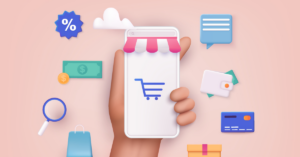
To create successful growth strategies, relevant marketing campaigns and products that deliver real value to your customers, you must first understand your customers. Doing that requires studying them, talking to them and building target personas to help you make them real to your team. Developing your customer profile is an integral piece of positioning your brand and an indispensable section of your brand book.
Many founders broaden their total addressable market (TAM) to make the numbers on fundraising decks seem more exciting, but effective customer targeting requires you to surgically narrow to a specific customer profile — right down to a name, an age and even a face. Once you’ve identified your customer, it’s critically important to articulate the demographic and ethnographic elements that define them. Demographic information (such as location, gender, marital status) isn’t nearly enough, and to understand the customer, you must also understand relevant ethnographic elements like their lifestyles and motivations.
Here’s how:
Pull a list of your most dedicated users for each metric that matters to your company, such as highest LTV, most frequent user, highest number of purchases or even highest referring customer. Your goal is to generate a list of customers, and the exact number may vary depending on the stage of your company. For a seed company, I’d recommend pulling a list of 15-25 customers. If you’re pre-launch and don’t have customers just yet, you can build a list of your desired users using external data from third-party apps and Google.
By clearly articulating the preferences, pain points and motivations of your ideal customers, you’ll be able to approach messaging in an informed and strategic manner.
Create a spreadsheet that includes at a minimum the following parameters:
- Unique customer ID
- Location
- Gender
- Age
- Career/profession
- Referral source
- Marital status
- Education
- Purchasing behavior (defining first purchase, second purchase, third purchase, etc.) and/or engagement behavior (first, interaction, second interaction and so on.)
- LTV
Since the above parameters include both internal and external data, you’ll have to use third-party tools or even do some cyber-sleuthing (you’ll be surprised how much you can learn with a Google search). Leverage your own database for usage behavior and customer journey, but put in the elbow grease necessary to understand more about each customer.


![Read more about the article [YS Learn] Five steps you can take to ensure you rise up the career ladder](https://blog.digitalsevaa.com/wp-content/uploads/2021/03/promotion-1615181085833-300x150.png)

![Read more about the article [Funding alert] Sentieo raises $20M in Series B round led by Ten Coves Capital](https://blog.digitalsevaa.com/wp-content/uploads/2021/05/Imageopwm-1611036451768-300x150.jpg)
![Read more about the article [Startup Bharat] How Patna’s Thikedaar is leveraging AI & ML to make home construction hassle-free](https://blog.digitalsevaa.com/wp-content/uploads/2022/05/CopyofImageSlidesPooja11-1653473488527-300x150.jpg)

